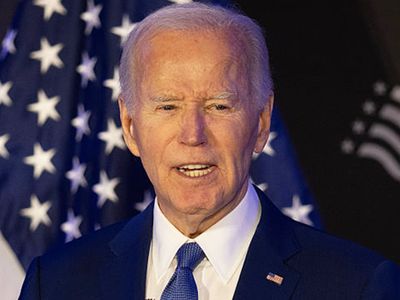White House Assesses Ways to Persuade Women to Have More Children
The White House has recently been listening to a variety of suggestions aimed at encouraging Americans to get married and have more children. This is one of the first signs that the Trump administration may take on a new cultural mission, supported by many of its right-wing allies, to fight falling birthrates and promote traditional family values.
One idea given to staff members suggests that 30 percent of Fulbright scholarships — a respected, government-funded international study program — should go to people who are either married or already have kids.
Another plan proposes giving every mother in the U.S. a $5,000 cash reward after childbirth.
A third idea involves government-funded programs to teach women about their menstrual cycles — partly to help them recognize when they are ovulating and can become pregnant.
These and similar ideas are part of a movement that’s been growing for years, focusing on America’s dropping birthrate. Now, it finally has allies in high government positions, such as Vice President JD Vance and Elon Musk. People who study policy and others who support having more children have been meeting with White House staff. In some cases, they’ve handed over written plans aimed at encouraging women to have more babies, according to four individuals who participated in these private talks and spoke anonymously.
The administration hasn’t yet made clear which ideas — if any — it will support. Still, those in favor of these plans believe that issues around fertility will become a key part of the administration’s priorities. They point out that President Trump has called for a “baby boom” and often highlights events where top officials appear in public with their kids.
“I think this administration naturally supports having more children,” said Simone Collins, an activist backing policies that aim to reverse the declining birthrate.
Simone Collins and her husband, Malcolm Collins, sent the White House draft versions of several executive orders, including one that would create a “National Medal of Motherhood” for women who have six or more children.
“Look at how many kids the top leaders in this administration have,” Ms. Collins said. “You didn’t see the same focus on family during Biden’s term.”
Private talks about family-related policies show that Mr. Trump may be developing a broad plan behind the scenes, even as he keeps his public focus on other major goals like cutting government spending, raising tariffs, and deporting undocumented immigrants. A major policy outline known as Project 2025 — which has helped shape much of Mr. Trump’s current agenda — starts its first chapter with a promise to put families at the center of American life.
This growing movement promotes a certain picture of family life — typically marriage between a man and a woman — and tends to exclude families that don’t follow traditional roles or setups. While Mr. Trump has mostly pushed for government savings in his second term, this focus on family might lead to more public spending on new goals.
Karoline Leavitt, the White House press secretary, said in a statement that President Trump is “proudly putting forward policies to help American families.”
“He wants this to be a country where every child can grow up safely and reach the American dream,” she said. “As a mother, I’m honored to work for a president who is making real efforts to improve things for the next generation.”
Trump, Vance, and Musk have all played key roles in promoting conversations around family and the “pronatalist” movement — both before the election and since Trump returned to office. At a January anti-abortion rally called the March for Life, Vice President Vance said he wanted “more babies in the United States of America” and more “young men and women to raise them.”
Last month, Trump promised to be “the fertilization president.”
The group of people who want to see higher birthrates comes from many backgrounds, but they all share concerns about the U.S. birthrate, which has dropped since 2007. They worry that, in the future, fewer workers will be left to support older Americans, and that this could harm the economy or even civilization itself.
However, people in the movement have different goals and disagree about the best ways to reach them. Some conservative Christians view the fall in marriage and birthrates as a cultural problem, blaming politics and the media for weakening the idea of the traditional family. They want more long-term marriages and larger families. On the other hand, some pronatalists focus on raising birthrates through any means, including using technology like IVF.
“Pronatalism just means having more kids,” said Emma Waters, a policy expert at the conservative Heritage Foundation, which helped create the Project 2025 plan. Waters herself is worried about the birthrate but doesn’t call herself a pronatalist. “Our bigger goal is not just more children, but more families being formed.”
Some leaders have already started applying ideas to support larger families. For example, Transportation Secretary Sean Duffy — who has nine kids and grew up with ten siblings — wrote a memo early this year saying that transportation funding should favor areas with higher birth and marriage rates. This may lead to less money for public transit in cities and more spending on highways and rural transportation.
The White House is expected to take the next major step soon. Trump aides are preparing a report, due by mid-May, recommending ways to make IVF more available and affordable. This was promised in a February executive order and was one of Trump’s campaign promises — though without many details at the time.
Discussions about what should be included in the report have revealed disagreements among supporters of the pro-family movement. For example, Musk supports IVF, and has used it to have children. But many anti-abortion Christian conservatives are against IVF, since it involves creating embryos outside the body and often results in some embryos not surviving.
“The Trump team is collecting a lot of ideas and feedback on this,” said Lyman Stone, director of the Pronatalism Initiative at the Institute for Family Studies. He has shared multiple policy suggestions with the White House. “They’re still figuring out what they want to do.”
Most experts say the boldest plans to increase family size won’t happen right away. Part of the reason is that even though other countries have tried different solutions, it's still unclear which policies truly encourage people to have more children — or whether any of them actually work. Many suggestions, such as a bigger child tax credit or a “baby bonus,” would need to go through Congress.
The Heritage Foundation has been studying this issue for over two years and plans to release a report soon about how they believe lawmakers and the administration can help stop falling birth and marriage rates. Jay Richards, head of the foundation’s family policy center, says the most daring idea so far is giving married couples with children more tax benefits, with increasing amounts for each additional child.
Heritage is also playing a key role in shaping how the White House might approach infertility and IVF. The group wants to “protect the unborn” and is wary of IVF. Instead, they want the government to focus on treating the health issues that cause infertility, following the “Make America Healthy Again” (MAHA) movement led by Health Secretary Robert F. Kennedy Jr. This approach, known as Restorative Reproductive Medicine, tries to fix health problems before turning to IVF.
“We need to bring that MAHA spirit and really tackle infertility,” said Waters, who co-authored a Heritage report on the topic. “If the goal is to make infertility care more accessible and affordable, IVF shouldn’t be the go-to solution.”
She has suggested that the National Institutes of Health should study infertility and women’s health issues, such as endometriosis. She also recommends funding programs that teach women about their menstrual cycles and fertility — like natural cycle tracking, which some conservative Christian women use to avoid pregnancy without birth control.
These programs could help women understand their own fertility and recognize signs of infertility. Waters believes they could be added to sex education in schools or offered as adult classes.
However, many medical experts are skeptical, calling this method politically driven and not backed by science.
“These ideas have been around for a long time and are usually based in religion,” said Dr. Eve Feinberg, a fertility expert at Northwestern University. “They’re not real medicine.”
Still, there could be chances for bipartisan cooperation on these issues, as they bring together different groups that want stronger family policies and more funding for infertility. While Dr. Feinberg disagrees with some of Waters’s points, she supports increasing government spending on infertility and reproductive health. Women’s health, she said, has been ignored for too long.
But growing support for mothers and children might clash with other priorities. Just this month, the health department reduced funding to its Division of Reproductive Health, which covers IVF and maternal care.
An official from the department said these programs will still continue. “As part of the president’s MAHA order, Secretary Kennedy is committed to understanding the root causes of chronic illness, including harmful substances in our environment and food,” the official explained.
Besides fertility issues, the White House has received many ideas about how to encourage marriage and childbearing.
In an effort to influence well-educated young people, Lyman Stone has proposed that married people or those with children should be given preference in all federal fellowship programs, including Fulbright, where many recipients are single recent graduates.
“The government is giving social status through these programs,” Stone said. “That’s why it’s harmful to reward being single without question.”
Some in the administration and Congress are also considering broader laws to reverse the declining birthrate. Several lawmakers are looking into offering new parents a “baby bonus” — a one-time payment of a few thousand dollars to the mother after childbirth. This could also be added to the child tax credit as a special benefit for new babies.
Trump shared his view on the issue at the 2023 Conservative Political Action Conference. His words have become a popular phrase among the movement’s supporters:
“We’ll support baby booms and baby bonuses for a new baby boom,” he said. “I want a baby boom.”






